More than 46 million homes in the U.S. have a cat, showcasing the immense popularity of these feline companions. However, for allergy sufferers, the dream of cat ownership can often feel out of reach. Cat allergies are a common issue, triggered by proteins produced by cats. While the concept of a completely hypoallergenic cat is a myth, certain breeds are known to produce fewer allergens, making them a potentially better fit for individuals with sensitivities.
Understanding Hypoallergenic Cats
It’s crucial to understand that the term “hypoallergenic” is somewhat misleading when it comes to cats. All cats produce the Fel d 1 protein, the primary allergen responsible for cat allergies, which is found in their saliva, skin glands, and dander. “Hypoallergenic Cats” are breeds that produce lower levels of this protein or have coat types that trap dander more effectively, thus reducing the amount of allergens released into the environment. Therefore, while no cat is entirely allergy-free, some breeds can significantly minimize allergic reactions in sensitive individuals.
12 Cat Breeds Often Considered Hypoallergenic
If you’re dreaming of welcoming a feline friend into your home but worry about allergies, exploring hypoallergenic breeds is a great starting point. Remember that individual reactions can vary, and spending time with a cat breed before bringing one home is always recommended to assess your personal allergy response. Here are 12 breeds often cited as being hypoallergenic:
1. Siberian
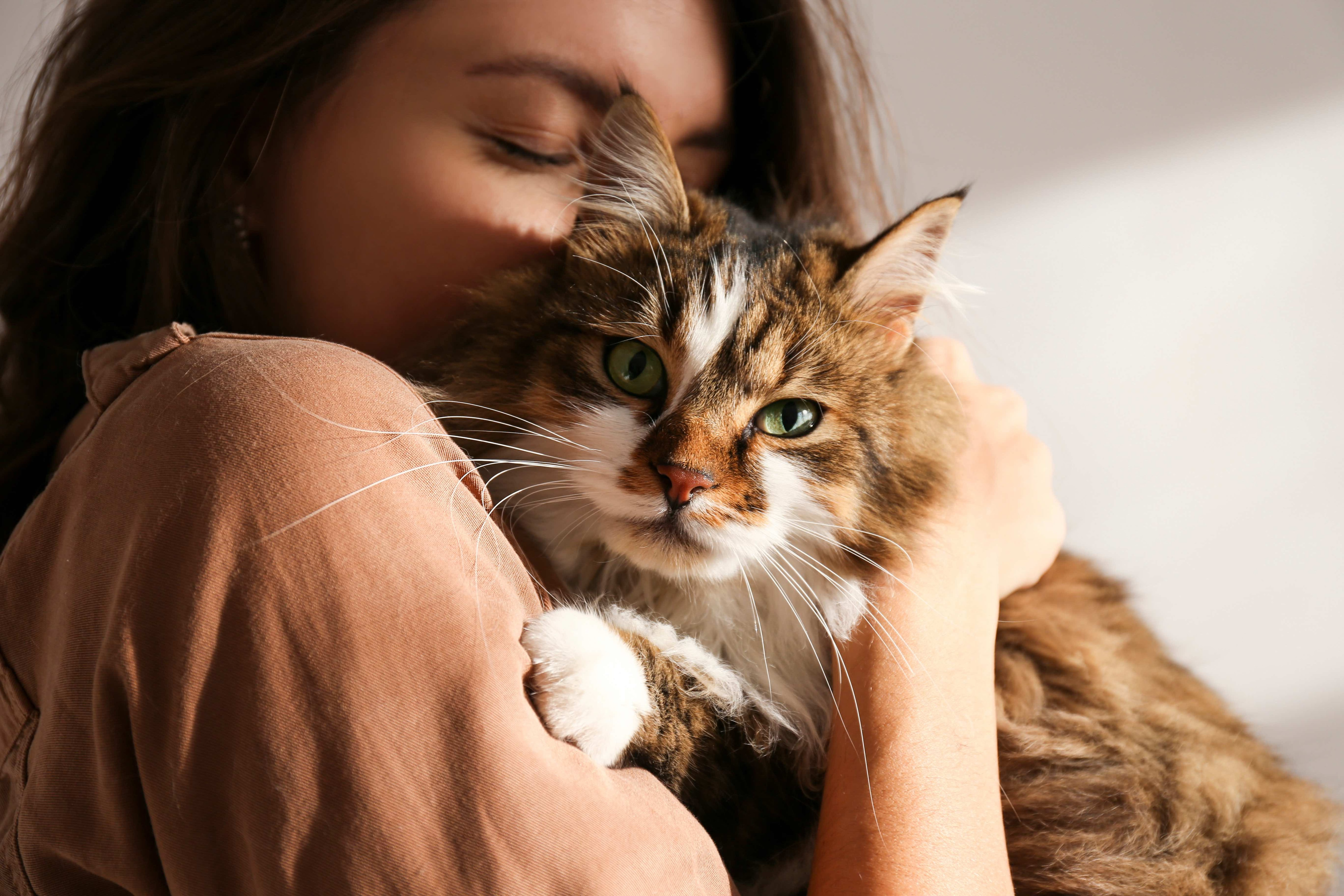 Woman lovingly embraces a Siberian cat with long brown and white fur
Woman lovingly embraces a Siberian cat with long brown and white fur
The Siberian cat, originating from Russia, is surprisingly considered hypoallergenic despite its long, luxurious coat. This breed produces less Fel d 1 protein in their saliva than many other breeds. Siberians are known for their gentle and affectionate nature, making them wonderful family pets. They are also intelligent and playful, adapting well to indoor living while still retaining a touch of their natural, robust constitution. Regular grooming is necessary to manage their thick coat and minimize shedding, further contributing to their hypoallergenic qualities.
2. Siamese
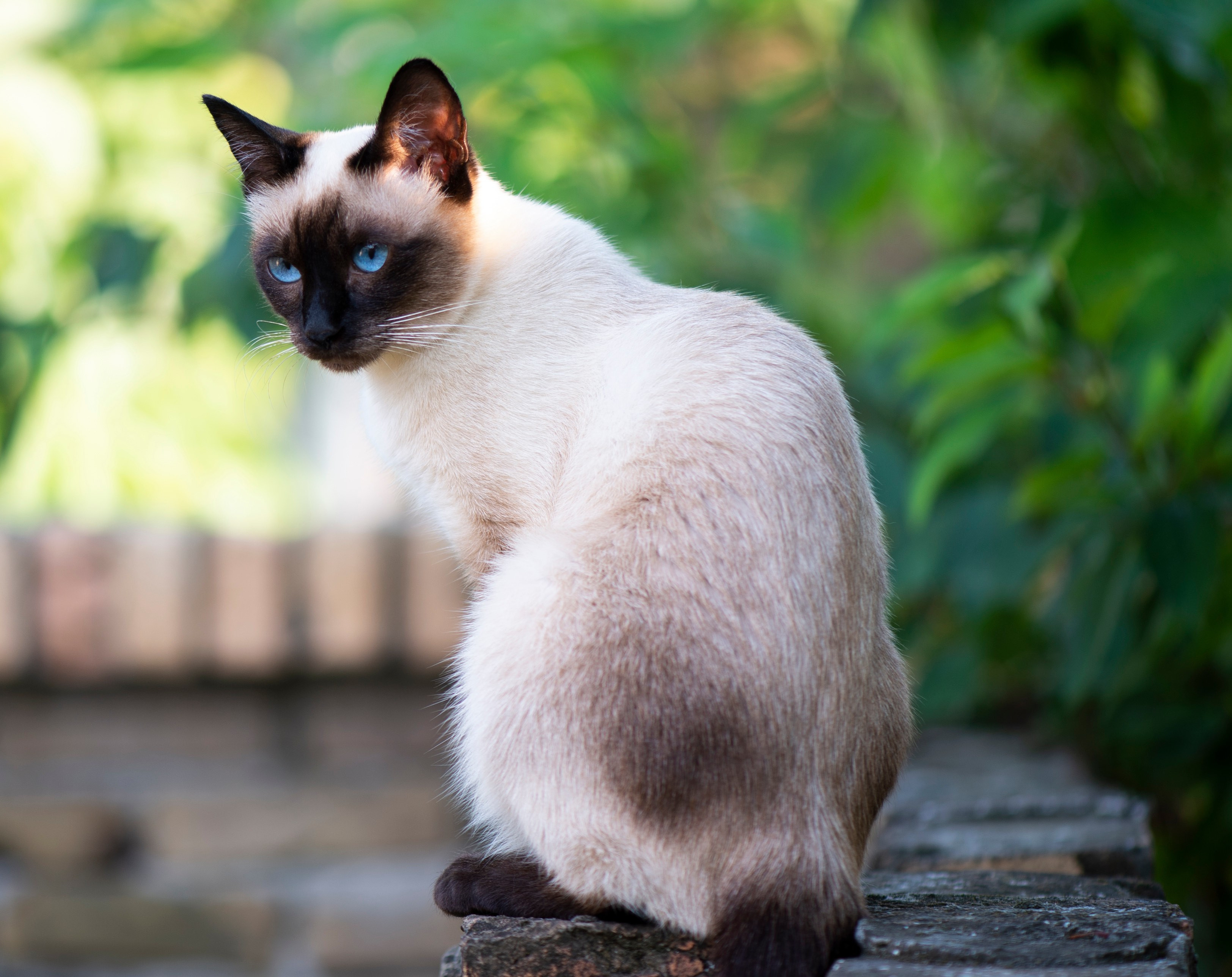 A sleek Siamese cat with blue eyes sits gracefully outdoors
A sleek Siamese cat with blue eyes sits gracefully outdoors
The elegant Siamese cat, with its striking blue almond-shaped eyes and short, close-lying coat, is another breed often recommended for allergy sufferers. Their minimal shedding contributes to lower allergen dispersal. Siamese cats are renowned for their intelligence, vocal nature, and strong bonds with their owners. They are active and playful, requiring attention and interaction. While their short coat is low-maintenance in terms of grooming, their social needs are high, making them ideal companions for individuals or families who can provide ample attention.
3. Bengal
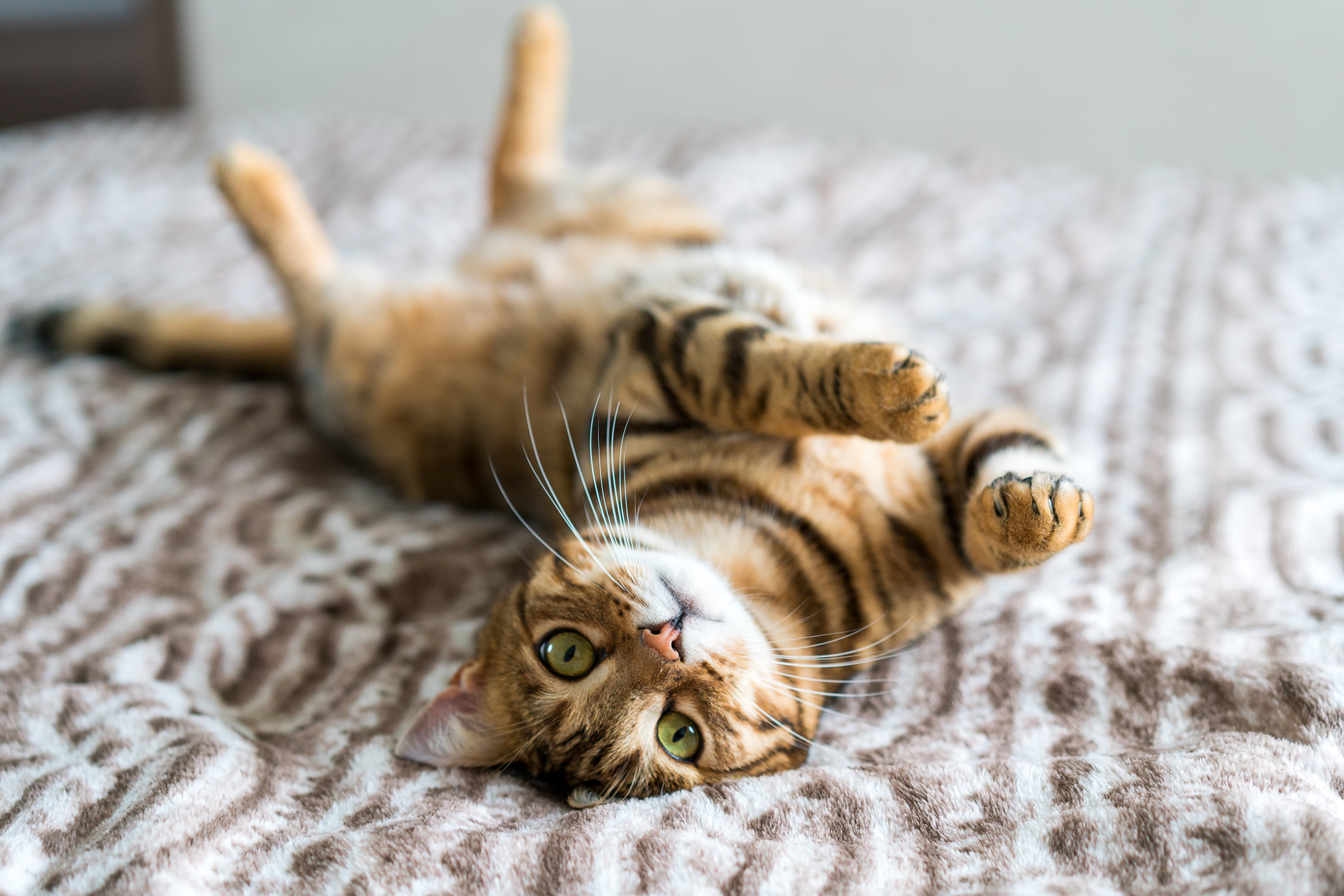 A Bengal cat with spotted fur relaxes on its back on a bed
A Bengal cat with spotted fur relaxes on its back on a bed
The Bengal cat is a captivating breed with a wild appearance reminiscent of its Asian Leopard Cat ancestry. Their short, uniquely patterned coat sheds minimally, contributing to their hypoallergenic reputation. Bengals are highly energetic, intelligent, and curious cats. They require a stimulating environment and plenty of playtime to keep them entertained. Their adventurous spirit and intelligence can make them engaging companions, but potential owners should be prepared for their high energy levels and need for consistent interaction and enrichment.
4. Russian Blue
 A Russian Blue cat gently headbutts a man's forehead in a sign of affection
A Russian Blue cat gently headbutts a man's forehead in a sign of affection
Russian Blue cats are known for their striking silvery-blue coat, emerald green eyes, and gentle temperament. They are considered hypoallergenic due to their dense, plush double coat which, while requiring regular grooming, traps dander effectively and minimizes allergen release. Russian Blues are typically quiet, reserved, and affectionate with their families, though they can be initially shy with strangers. Their calm and gentle nature makes them well-suited to quieter households and individuals seeking a less demanding yet loving companion.
5. Sphynx
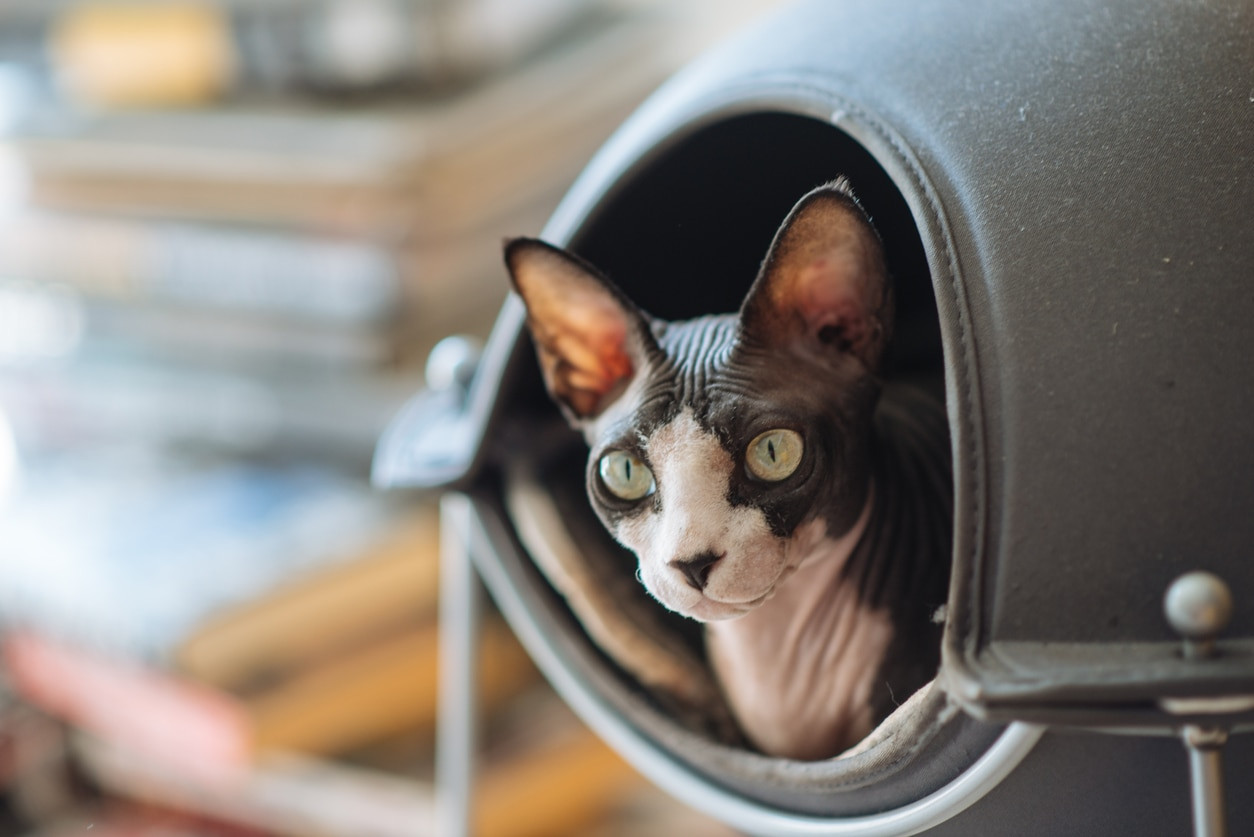 A hairless Sphynx cat with black and pink skin peers out from a covered cat bed
A hairless Sphynx cat with black and pink skin peers out from a covered cat bed
The Sphynx cat is perhaps the most visually distinctive hypoallergenic breed, known for its lack of fur. While not entirely hairless (they have a fine down), their minimal coat means less hair to trap and release allergens. However, Sphynx cats still produce allergens in their skin secretions, which require regular bathing to manage oil build-up and minimize allergen spread. Sphynx cats are known for their outgoing, affectionate, and even dog-like personalities. They are highly social and crave attention, making them devoted and entertaining companions.
6. Devon Rex
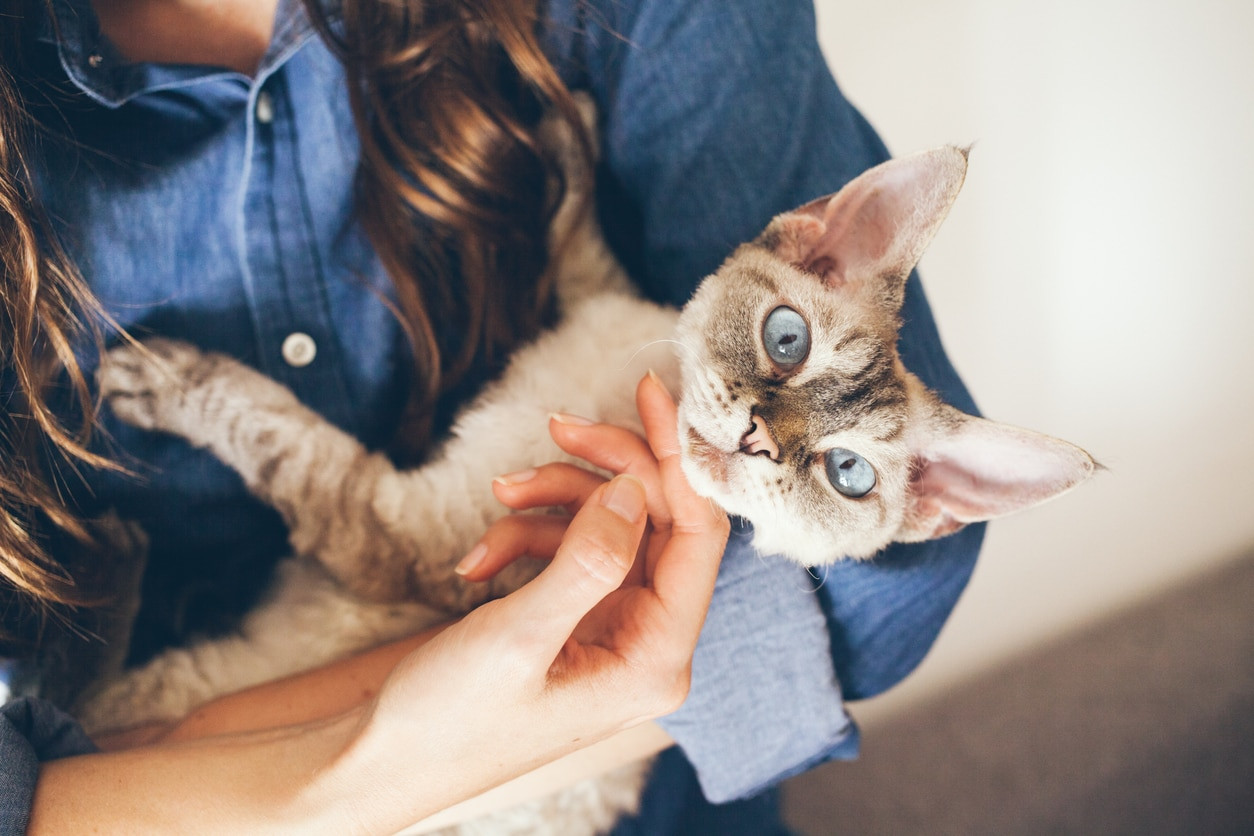 A woman cradles a Devon Rex cat in her arms like a baby
A woman cradles a Devon Rex cat in her arms like a baby
Devon Rex cats are characterized by their large ears, elfin faces, and soft, wavy coat. Their unique coat type sheds very little, contributing to their hypoallergenic status. Devon Rex cats are playful, intelligent, and highly people-oriented. They are known for their affectionate and mischievous nature, often described as “monkey-like” due to their playful antics and climbing abilities. They thrive on interaction and can become very attached to their families, making them wonderful, engaging pets for those who can provide plenty of attention.
7. Cornish Rex
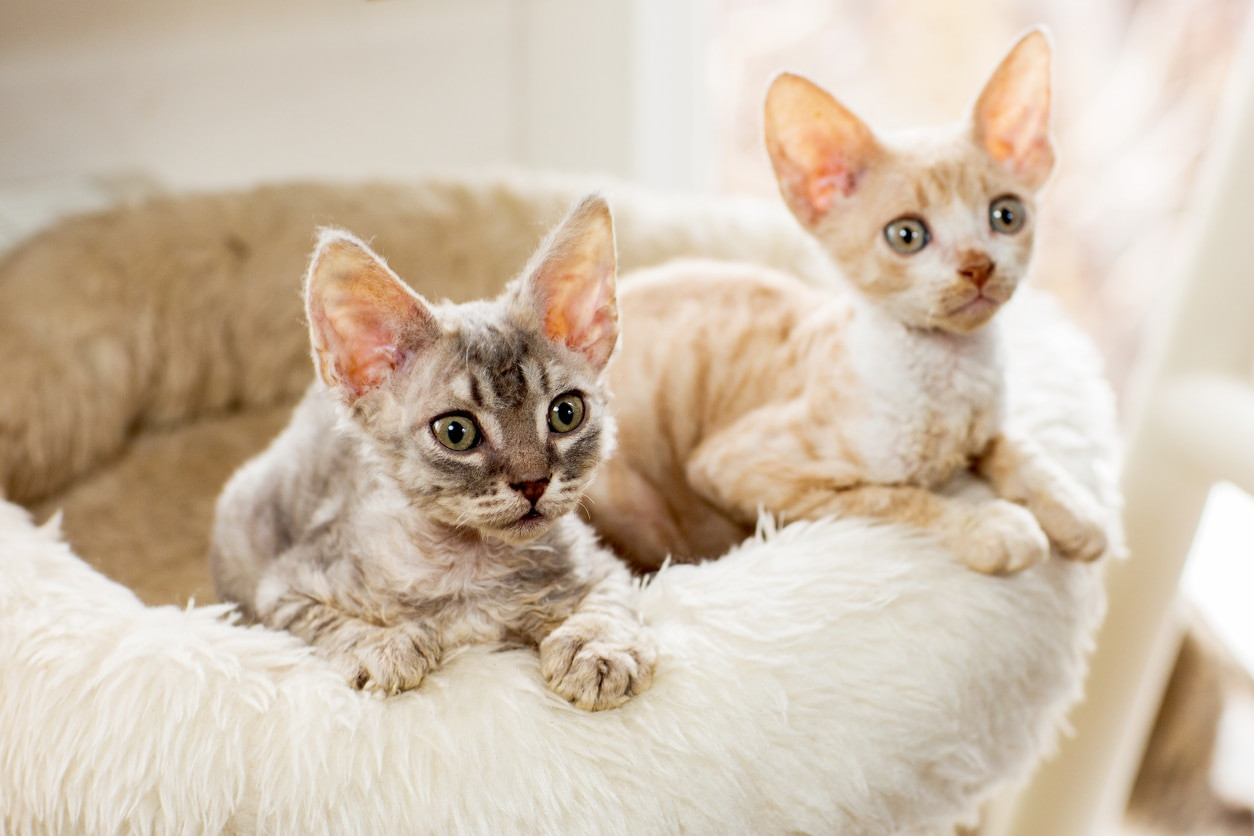 Two Cornish Rex kittens cuddle together in a cozy cat bed
Two Cornish Rex kittens cuddle together in a cozy cat bed
Similar to the Devon Rex, the Cornish Rex has a distinctive wavy or rippled coat that lies close to the body and sheds minimally. This breed is also considered hypoallergenic. Cornish Rex cats are known for their slender bodies, large ears, and elegant appearance. They are active, playful, and incredibly affectionate, often seeking out warmth and human companionship. Cornish Rex cats are intelligent and trainable, enjoying interactive games and activities. Their social and playful nature makes them excellent family pets, especially for those seeking an interactive and engaging feline companion.
8. Javanese
 A gray Javanese cat gently grooms her kittens
A gray Javanese cat gently grooms her kittens
The Javanese cat, with its elegant, medium-long single coat, is related to the Siamese and Balinese breeds and shares their hypoallergenic qualities. Despite having a longer coat than some other hypoallergenic breeds, the Javanese coat is fine and sheds little. They are intelligent, playful, and vocal cats, known for their strong bonds with their owners and demanding of attention. Javanese cats are active and curious, requiring mental stimulation and interaction. Their affectionate and communicative nature makes them wonderful companions for those who appreciate a vocal and engaging feline friend.
9. Balinese
 A longhaired Balinese cat snuggles affectionately with a woman
A longhaired Balinese cat snuggles affectionately with a woman
The Balinese cat is essentially a longhaired Siamese, possessing the same elegant lines and pointed coloration but with a flowing, silky coat. Like their Siamese relatives, Balinese cats produce lower levels of the Fel d 1 protein and are considered hypoallergenic. They are intelligent, affectionate, and vocal, sharing the Siamese’s love for human companionship. Balinese cats are playful and enjoy interactive games, making them engaging and devoted family pets. Their beautiful long coat, while requiring some grooming, adds to their allure and doesn’t detract from their hypoallergenic benefits.
10. Oriental Shorthair
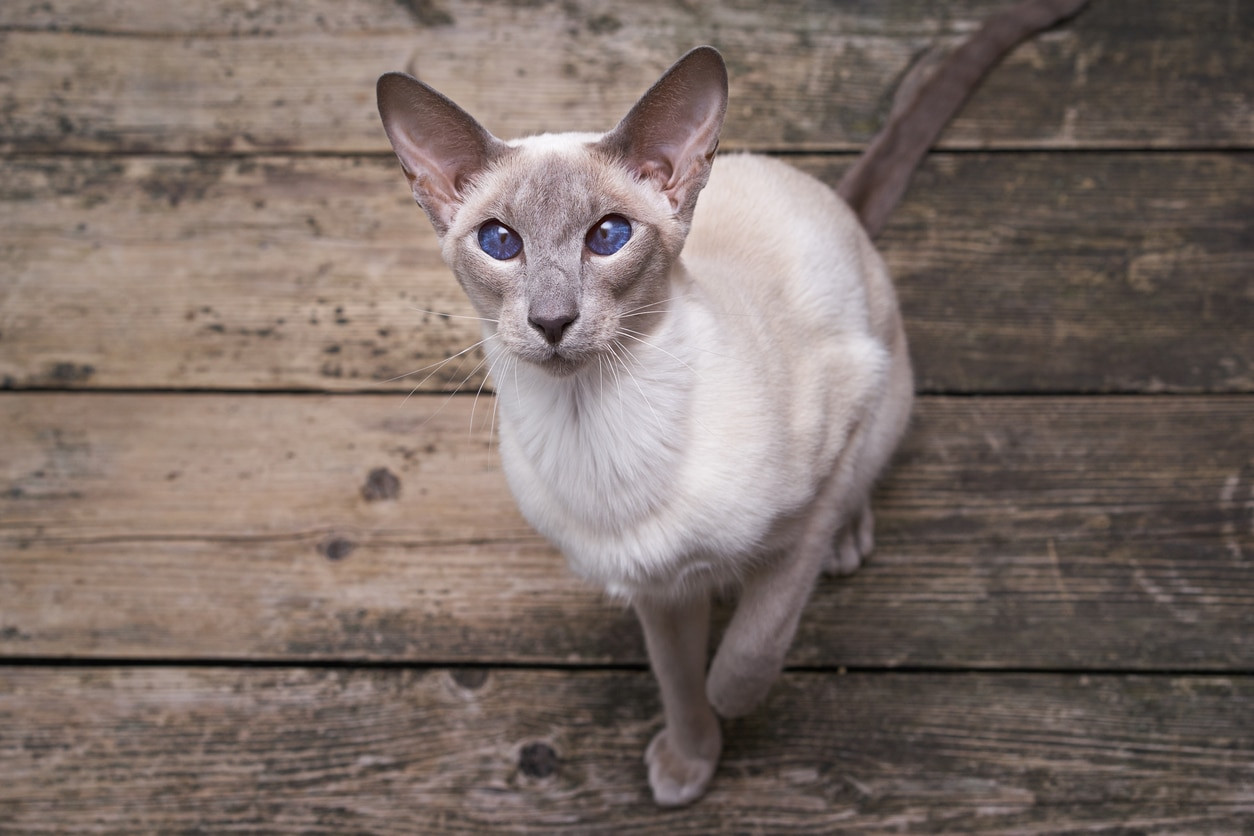 A gray and white Oriental Shorthair cat gazes upwards towards the camera
A gray and white Oriental Shorthair cat gazes upwards towards the camera
Oriental Shorthair cats are known for their striking appearance, with large ears, almond-shaped eyes, and a sleek, short coat. Their short coat requires minimal grooming and contributes to lower allergen dispersal, making them a good choice for allergy sufferers. Oriental Shorthairs are intelligent, curious, and highly active cats. They are known for their playful nature and strong attachment to their families. They are also vocal and communicative, often “talking” to their owners with a distinctive meow. Their energetic and social personalities make them entertaining and devoted companions.
11. Burmese
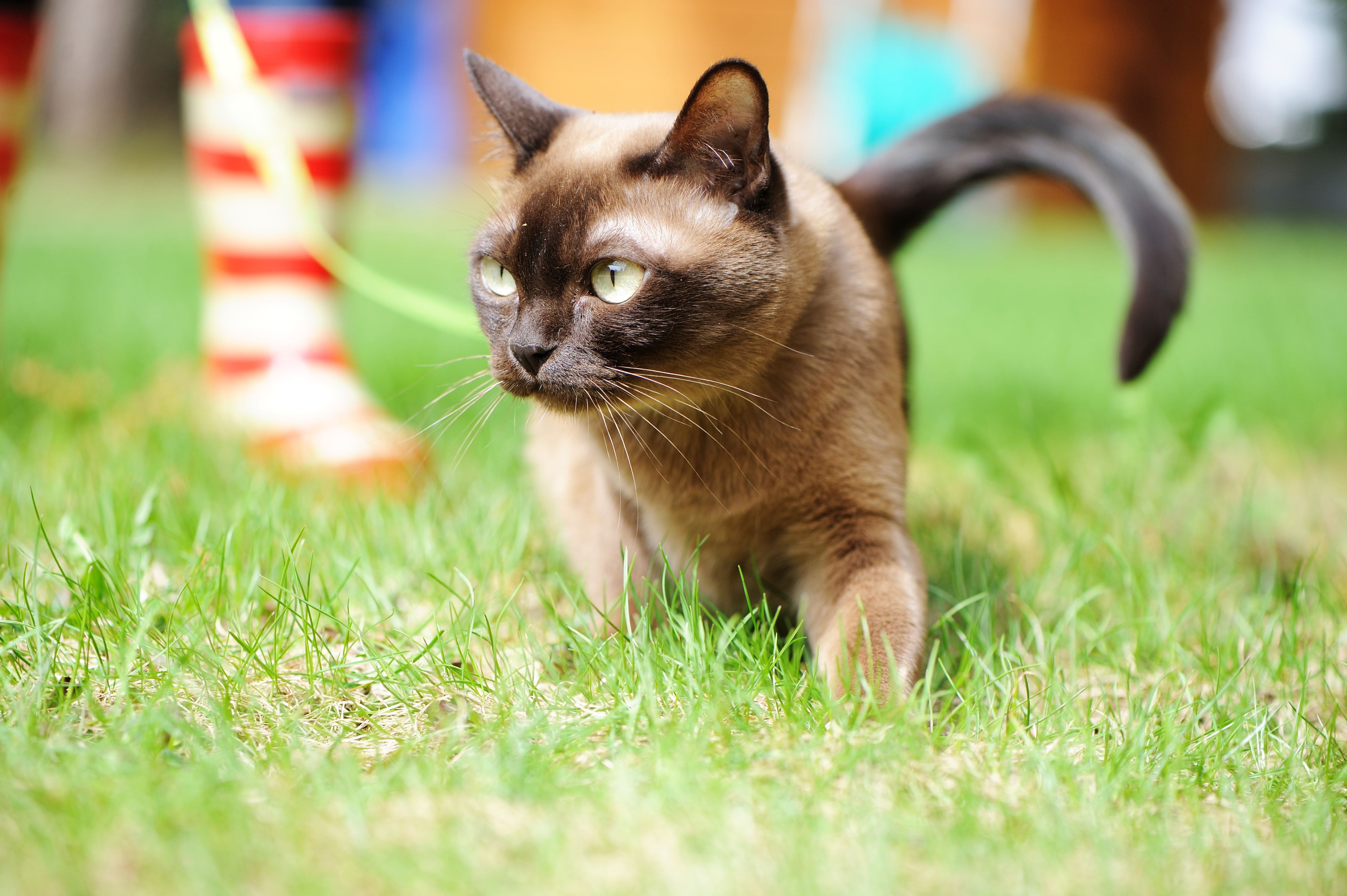 A Burmese cat wearing a leash and harness explores the outdoors
A Burmese cat wearing a leash and harness explores the outdoors
Burmese cats are compact and muscular with a short, satin-like coat that lies close to the body. Their low-shedding coat and lower allergen production contribute to their hypoallergenic qualities. Burmese cats are known for their affectionate, playful, and intelligent personalities. They are highly people-oriented and enjoy being part of family activities. Burmese cats are also relatively low-maintenance in terms of grooming, making them a convenient and loving companion for individuals or families seeking a less allergenic feline friend.
12. Tonkinese
 A champagne-colored Tonkinese cat sits on the floor and looks directly at the camera
A champagne-colored Tonkinese cat sits on the floor and looks directly at the camera
The Tonkinese cat is a hybrid breed resulting from crossing Siamese and Burmese cats, inheriting desirable traits from both. They have a short, soft coat that sheds minimally and are considered hypoallergenic. Tonkinese cats are known for their playful, affectionate, and intelligent nature. They are social and enjoy being around people, often described as “Velcro cats” due to their desire to be close to their owners. Tonkinese cats are also moderately vocal and enjoy interactive play, making them engaging and loving companions for those seeking a moderately active and hypoallergenic cat breed.
Tips for Living with Hypoallergenic Cats and Managing Allergies
Even with a hypoallergenic cat, managing allergies is still important. Here are some helpful tips:
Thorough Research and Breed Interaction
Before committing to a specific breed, conduct thorough research and, crucially, spend time with cats of that breed. Allergy responses are individual, and what works for one person may not work for another. Visiting a breeder or shelter and interacting directly with the cat breed you are considering will help you gauge your personal allergic reaction.
Consult an Allergy Specialist
Consulting an allergist is a proactive step in managing cat allergies. An allergist can perform allergy testing to confirm cat allergies and assess the severity of your sensitivities. They can also recommend strategies for managing your allergies, which may include medication, immunotherapy (allergy shots), or environmental control measures.
Maintain a Clean Home Environment
Regular cleaning is essential in minimizing allergens in your home. Vacuum frequently, ideally with a HEPA filter vacuum cleaner, to remove cat dander from carpets, rugs, and upholstery. Dust regularly with a damp cloth to trap allergens rather than dispersing them into the air. Wash bedding, including pet bedding, frequently in hot water.
Consider Air Purifiers
High-efficiency particulate air (HEPA) purifiers can significantly reduce airborne allergens, including cat dander. Place air purifiers in rooms where you and your cat spend the most time, such as bedrooms and living areas, to improve air quality and reduce allergy symptoms.
Discuss Diet with Your Veterinarian
Innovative cat food options, such as Purina® Pro Plan® LIVECLEAR®, are formulated to reduce the major cat allergen, Fel d 1, in cat saliva. This specialized diet can significantly decrease the amount of active Fel d 1 transferred to the cat’s coat during grooming, thus reducing allergen dispersal. Consult with your veterinarian to determine if such a diet is appropriate and beneficial for your cat and your allergy management plan.
Regular Grooming and Bathing (When Necessary)
Even low-shedding hypoallergenic cats benefit from regular grooming. Brushing your cat regularly helps to remove loose hair and dander, preventing it from spreading around your home. While cats are self-grooming, occasional bathing can further reduce dander and allergens. However, avoid over-bathing, as it can dry out your cat’s skin. Consult your veterinarian for advice on appropriate bathing frequency and products.
FAQs About Cats That Don’t Shed
Are there any non-shedding cats?
There are no truly non-shedding cats, except for hairless breeds like the Sphynx. However, even hairless cats produce allergens in their skin, saliva, and urine. The term “non-shedding” is often used loosely to describe breeds that shed minimally.
Can cats be 100% hypoallergenic?
No, cats cannot be 100% hypoallergenic. All cats produce allergens. Hypoallergenic breeds simply produce fewer allergens or retain them more effectively, reducing the likelihood and severity of allergic reactions in sensitive individuals. Choosing a hypoallergenic breed, combined with proactive allergy management strategies, can make cat ownership a reality for many allergy sufferers.
WRITTEN BY
Nicole Zittritsch, LVT, BSc, MPH
Veterinarian Technician

